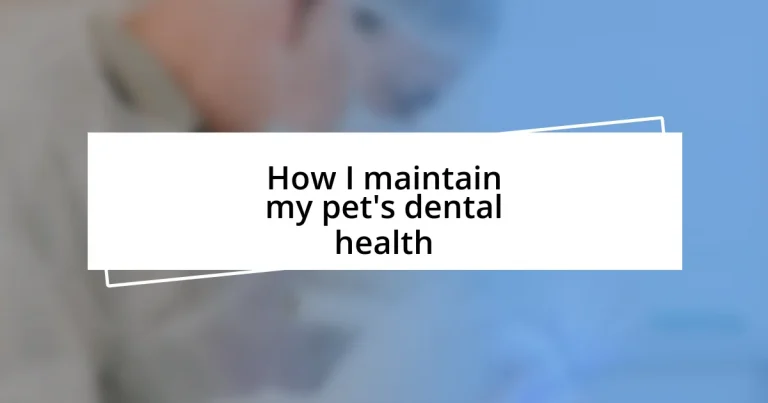Key takeaways:
- Dental health is crucial for pets’ overall well-being; poor dental hygiene can lead to serious health issues.
- Recognizing signs of dental problems, such as bad breath and changes in eating habits, allows for early intervention.
- Choosing high-quality dental products can significantly improve pets’ dental health and reduce tartar buildup.
- Regular vet checkups and a holistic approach, including exercise and nutrition, are essential for maintaining pets’ overall wellness.
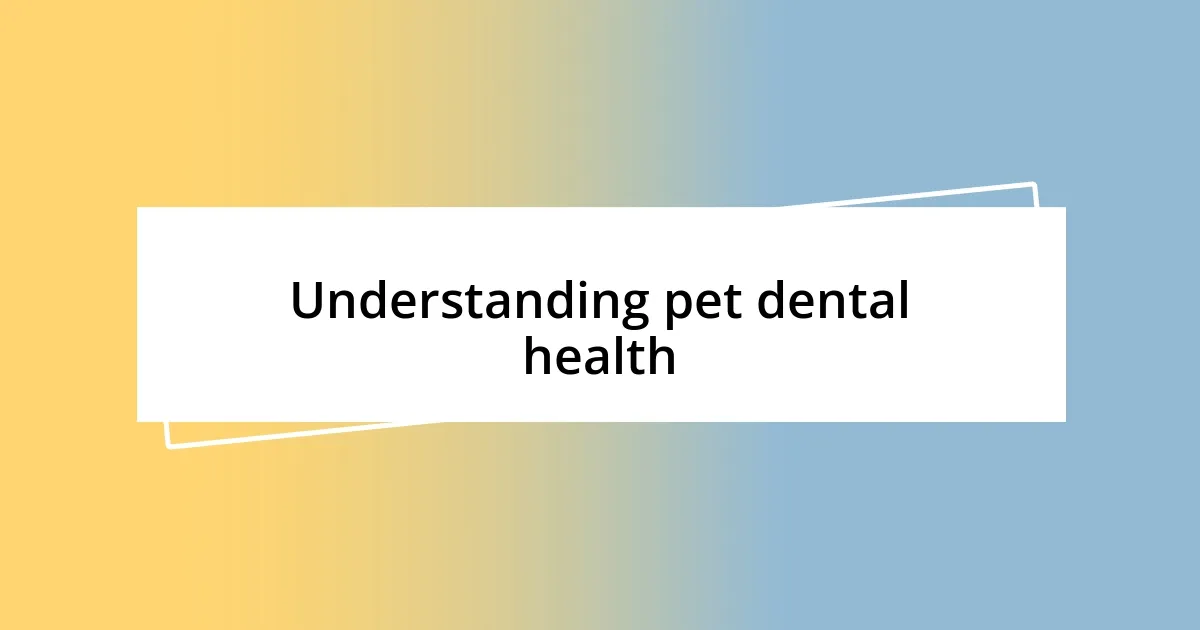
Importance of dental health
Dental health might seem like a minor detail, but it plays a crucial role in my pets’ overall well-being. I remember a time when my dog, Max, suddenly became less playful. A quick vet visit revealed dental issues that were causing him pain. It struck me how much dental health affects their quality of life—when their mouths hurt, they can’t enjoy their favorite activities.
Thinking about it further, good dental hygiene can prevent serious health problems. Just like in humans, bacteria from dental issues can enter the bloodstream and impact major organs like the heart or liver. Have you ever considered how easy it is to overlook your pet’s teeth while focusing on their fur and diet? I certainly did, but now I realize that a few minutes a day can save us both a lot of heartache.
Moreover, maintaining my pets’ dental health has become part of our bonding routine. I’ve noticed that when I brush their teeth, it’s not just about cleanliness—it’s a time when we connect, and they seem to trust me even more. It’s incredible how something so simple strengthens our relationship while keeping them healthy.
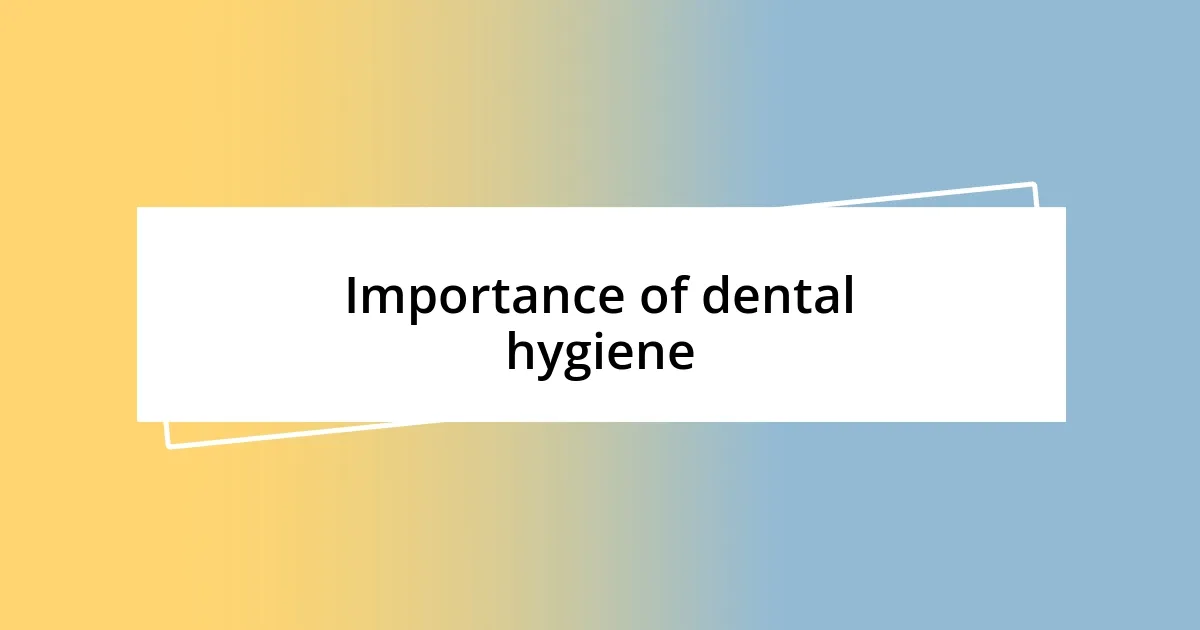
Signs of dental problems
Recognizing the signs of dental problems in pets is essential for early intervention. I remember when my cat, Luna, started avoiding her favorite treats and predominantly eating soft food. This subtle change made me realize that dental issues might be at play, leading us to prompt vet care before her condition worsened.
Here are some key signs to watch for:
- Bad breath: This is often the first noticeable sign that something is wrong.
- Changes in eating habits: Reluctance to eat hard food or nudging food around the bowl can indicate discomfort.
- Excessive drooling: If your pet is salivating more than usual, it may be due to pain in their mouth.
- Red or swollen gums: Healthy gums are typically a nice pink, so any discoloration is a red flag.
- Visible tartar or plaque: A buildup of yellowish-brown deposits on the teeth signifies poor dental health.
- Behavioral changes: If your pet becomes more irritable or withdrawn, it could be a sign of discomfort related to dental issues.
By being proactive and attentive to these signs, I’ve been able to maintain my pets’ dental health effectively. It’s a relief to catch problems early, preventing more serious issues down the line.
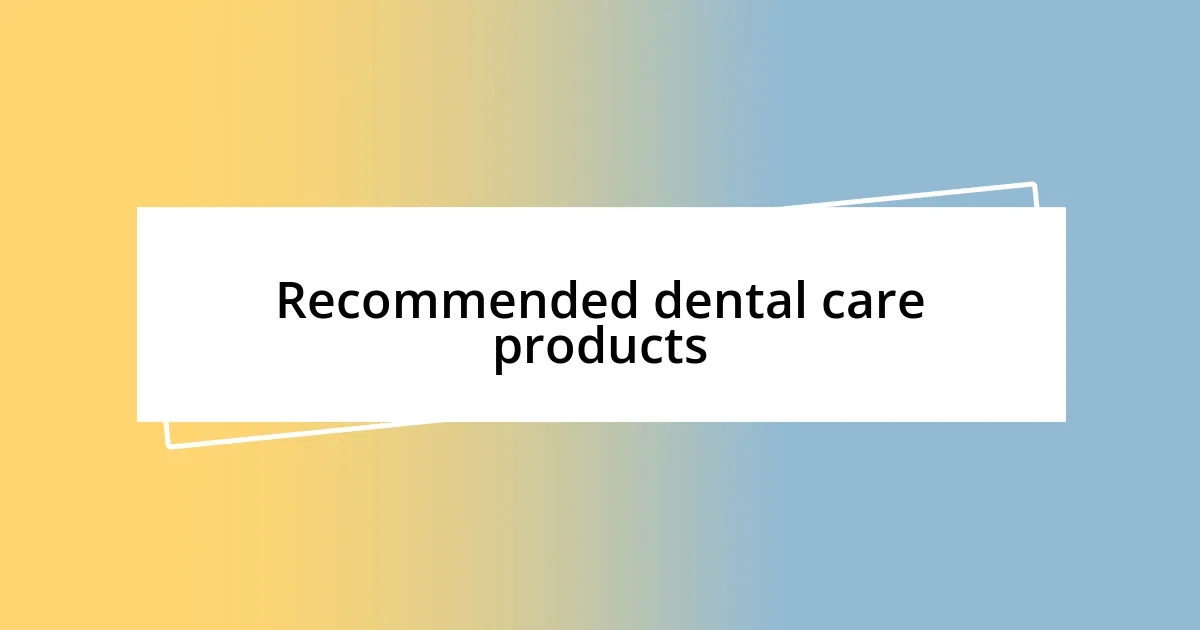
Choosing the right dental products
Choosing the right dental products can be a game-changer in maintaining my pets’ dental health. Over the years, I’ve tried various options, and I can confidently say that not all products are created equal. For example, when I first switched to a specific brand of toothpaste designed for pets, I noticed an immediate improvement in my dog’s breath and a reduction in tartar buildup. It really struck me how a simple change could lead to such significant results, reinforcing the importance of choosing quality products.
When considering dental chews, I learned the hard way that not all treats are beneficial. Initially, I picked a popular brand that seemed appealing but quickly discovered that it contained additives that weren’t great for my pets. In contrast, I later found a natural alternative that not only cleans their teeth but also promotes fresh breath. Isn’t it fascinating how diligence in selection can lead to healthier choices for our furry companions?
To make it easier for others, I’ve created a comparison table to highlight some popular dental products based on my experiences. This way, you can quickly see what might work best for your pets:
| Product Type | Recommended Brand | Benefits |
|---|---|---|
| Toothpaste | Vet’s Best Enzymatic Dog Toothpaste | Effective in reducing plaque and freshening breath |
| Dental Chews | Greenies | Helps reduce tartar and supports overall dental health |
| Water Additive | PetSafe Water Additive | Easy to use, promotes fresh breath and helps prevent plaque buildup |
| Finger Brush | Pet Nano Finger Toothbrush | Gentle cleaning method, easy to use on pets who dislike traditional brushes |
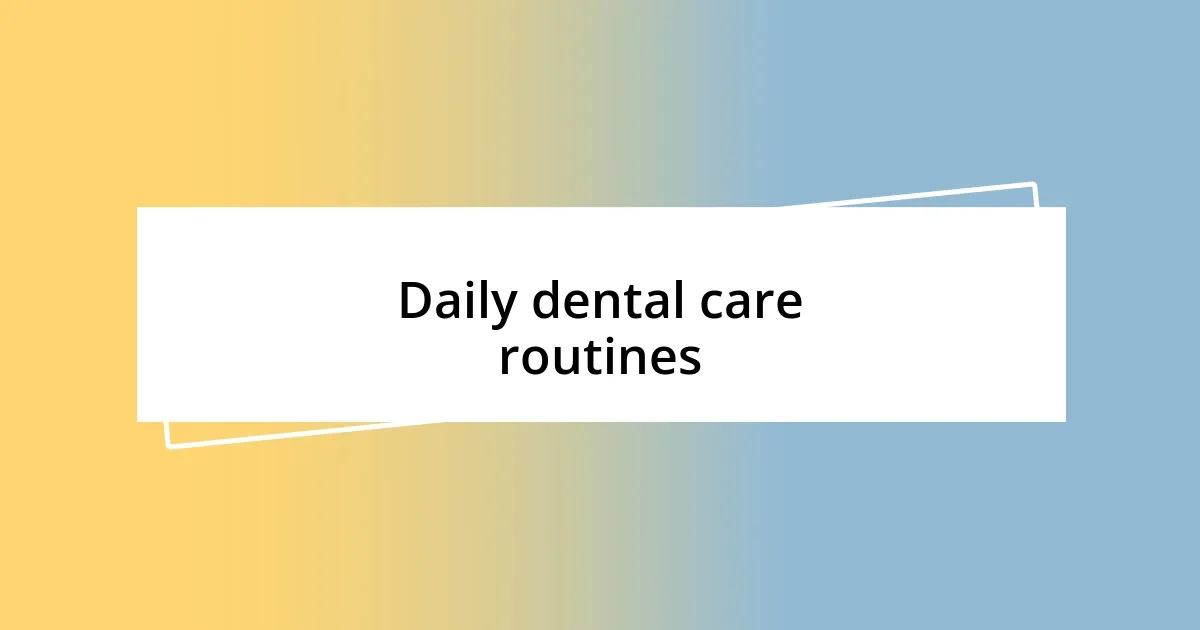
Regular brushing techniques
Brushing my pets’ teeth has become a crucial part of our routine, and I’ve found a technique that really works for us. I use a soft-bristled pet toothbrush, which is gentle on their gums, and I always apply a pet-safe toothpaste. Honestly, I remember the first time I brushed Luna’s teeth; she was so confused! But with patience and treats, she learned that this ritual was for her benefit. Have you ever tried brushing your pet’s teeth and been met with resistance? It can be a challenge, but persistence pays off.
To make the process smoother, I break it down into short sessions. Initially, I would only brush one or two teeth at a time to avoid overwhelming them. This approach not only builds their comfort but also establishes a positive association with brushing. It felt rewarding to see progress—Luna eventually looked forward to our toothbrushing time, almost like it was her special moment! How incredible is that transformation?
I also sing little songs or talk to them while brushing, which helps keep their mood light. This playful technique makes the experience enjoyable instead of a chore. I believe that if they associate brushing with positive emotions, they’ll be more willing to accept it in the long run. Have you ever thought about how important it is to add a bit of fun to these routines? Creating that joyful bond definitely makes all the difference.
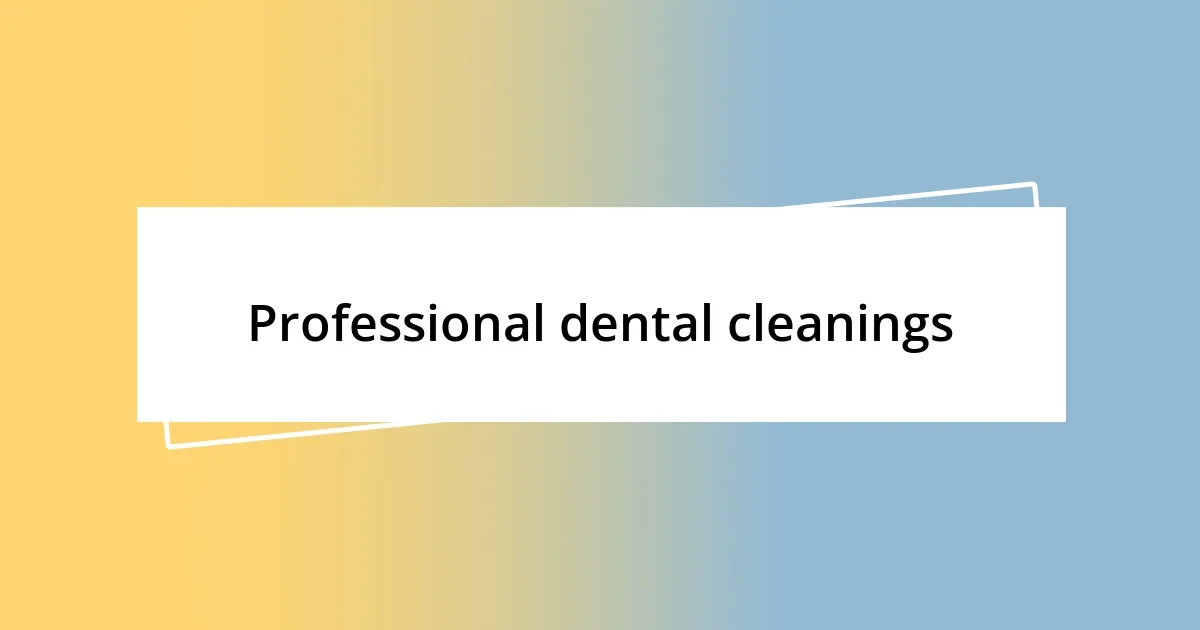
Dental treats and toys
Dental treats and toys play a significant role in my pets’ dental care routine. I’ve found that interactive toys with a dental focus not only keep my pets entertained but also help remove plaque. The first time I gave Max a dental toy, it was like watching a kid with a new gadget—he was so engaged! It warmed my heart to see him having fun while also caring for his teeth. Have you noticed how a playful approach can make a chore feel like playtime?
When it comes to dental treats, I’m particularly picky about ingredients. I remember neglecting to check the label of a popular dental chew, only to find out later it had artificial flavors I wasn’t comfortable with. Now, I opt for treats that are both effective and natural, ensuring my pets aren’t just enjoying a tasty snack but also getting real dental benefits. Do you find it tough to navigate the plethora of options available?
Finding the right balance of treats and toys has made a noticeable difference in their dental health. I often see less tartar on their teeth, and their breath smells fresher after incorporating these products into our routine. Watching them chew on their dental toys makes me smile; it’s reassuring to know that while they’re enjoying themselves, they’re also contributing to their health. Isn’t it rewarding when our pets’ happiness aligns with their well-being?
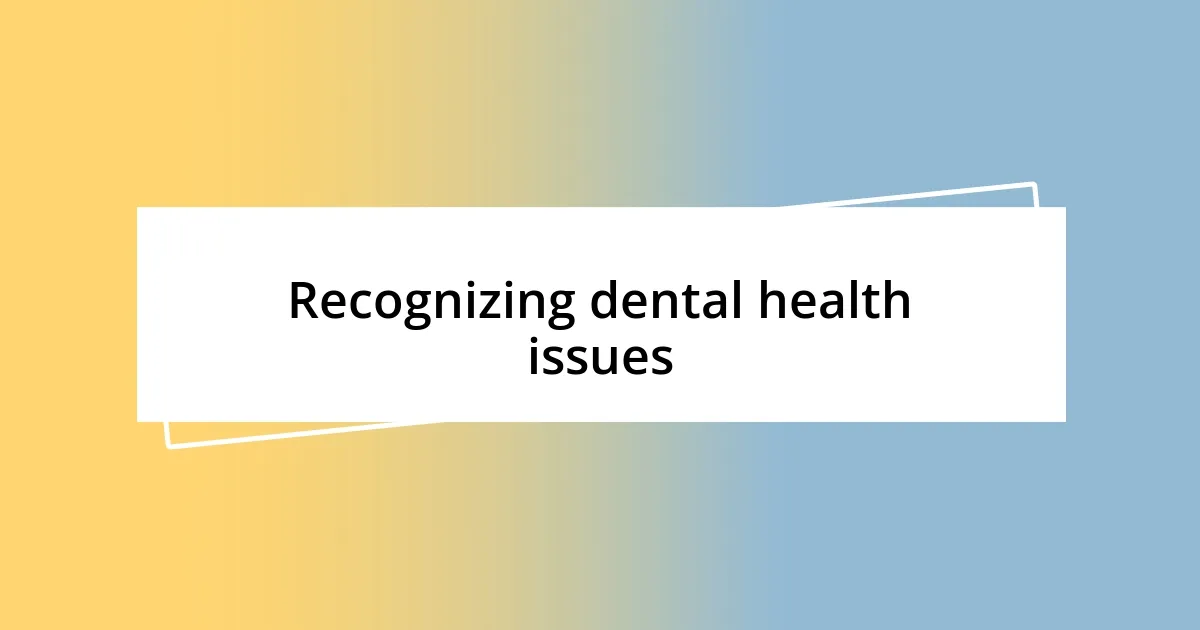
Scheduling vet checkups
Scheduling regular vet checkups is something I prioritize for my pets, as it allows us to stay ahead of any potential dental issues. I remember the first time I took Luna for her annual exam; I was surprised at how thorough the vet was in assessing her teeth. Not only did they evaluate her overall health, but they also flagged some early signs of tartar buildup. Have you ever realized just how much a professional eye can catch?
I typically mark my calendar a few months in advance to ensure I don’t miss these crucial appointments. Even though I know they can be a little stressful for my pets, I find that preparing them—like bringing along their favorite blanket or a tasty treat—can really ease their anxiety. It’s all about setting the right tone for the day! Do you have any strategies for keeping your pets calm during vet visits?
After each checkup, I gain peace of mind knowing that I’m proactively maintaining their dental health. Sometimes, the vet offers valuable tips tailored specifically to my pets, which I find incredibly useful. Implementing their recommendations at home feels like a collaborative effort. Isn’t it amazing how a good relationship with your vet can lead to better health for your furry companions?
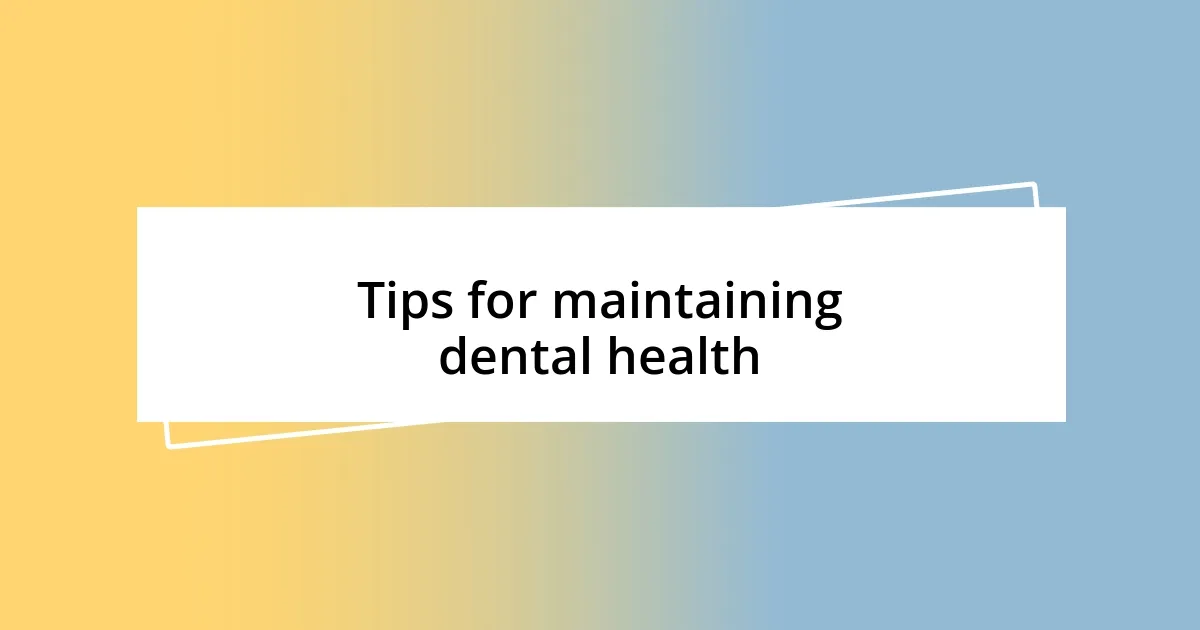
Maintaining overall pet wellness
Maintaining my pets’ overall wellness involves a holistic approach that goes beyond just dental care. For me, daily exercise is crucial; I’ve noticed when Max gets his vigorous playtime, he’s not only happier but also less prone to dental issues. It’s fascinating how a wagging tail can signal good health, don’t you think?
Nutrition also plays a pivotal role in their wellness journey. I remember a time when I switched to a high-quality diet, and the change was palpable. Their energy levels soared, and I could tell their coats became shinier. Isn’t it incredible how the right food can impact not just their dental health, but their overall vitality?
I also prioritize mental stimulation alongside physical well-being. Interactive games and puzzle feeders keep Luna engaged and alert, which, in my experience, contributes to a well-rounded state of health. Reflecting on the joy she finds in these activities makes me wonder—how often do we consider the emotional aspects of a pet’s wellness? It’s really about nurturing their happiness and health simultaneously.












